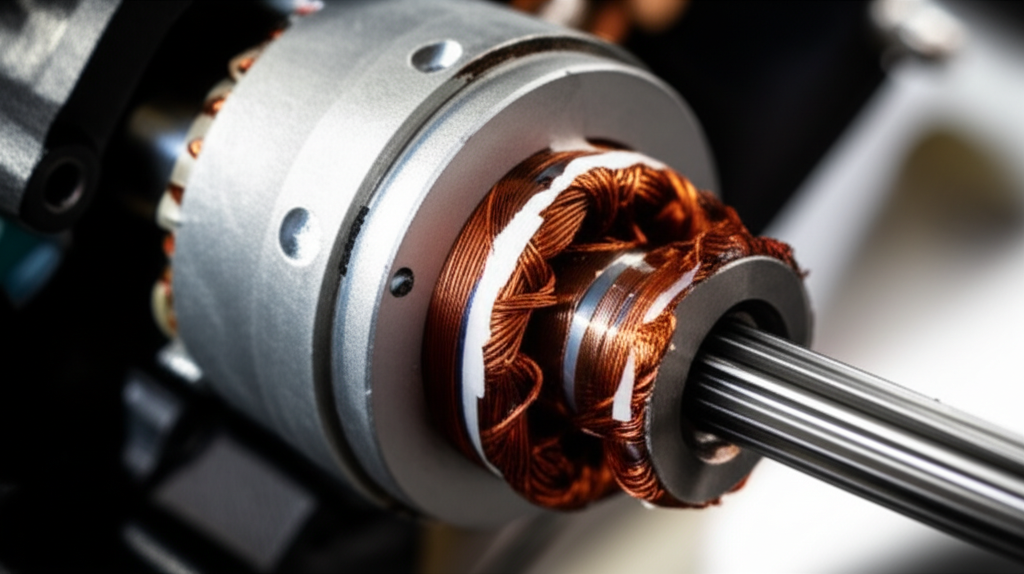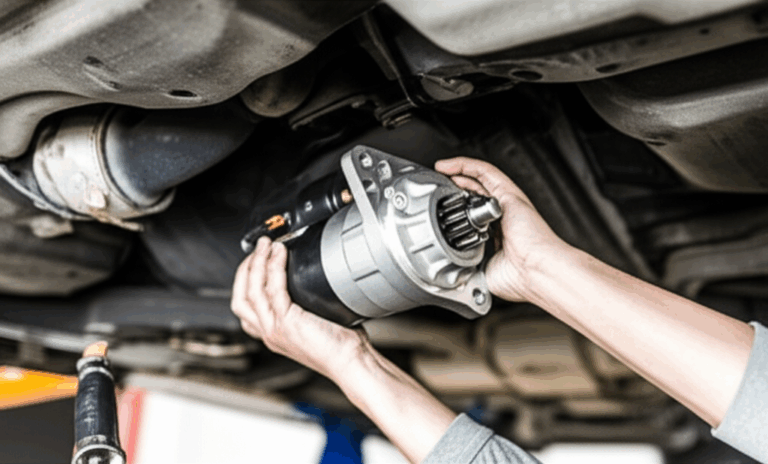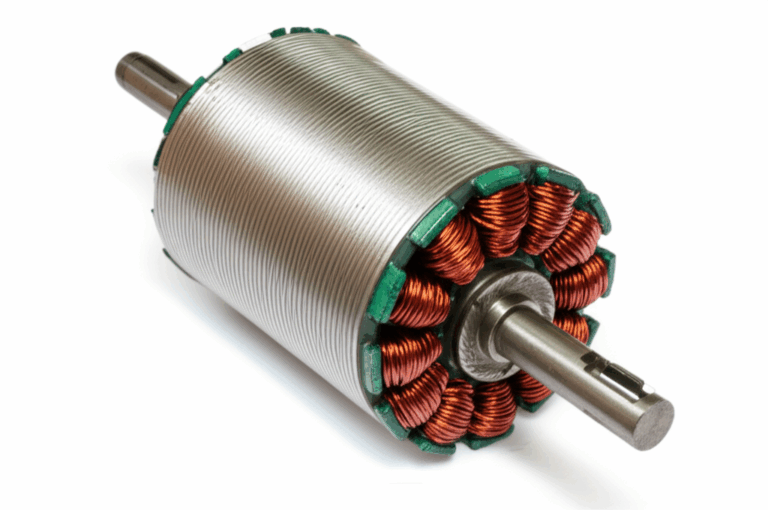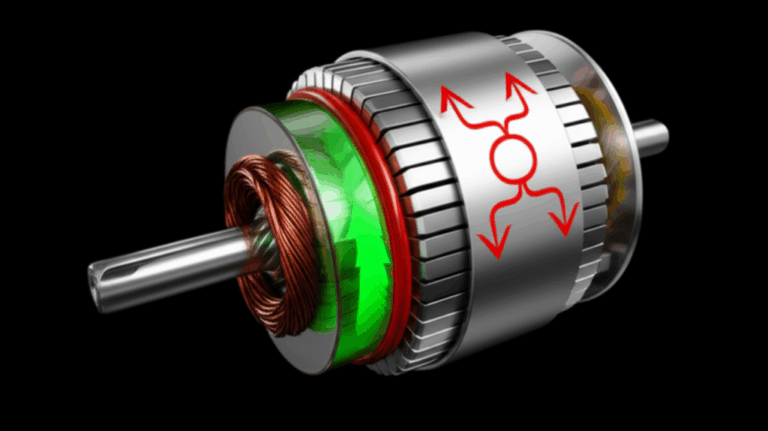
How Can You Make a Motor Stronger? Unlocking Maximum Power & Torque
Every design engineer runs into the same tough trade‑off. You want a motor that delivers higher torque and power density without cooking itself or blowing the budget. You also need to explain the choices to stakeholders who care about efficiency, lifecycle cost, and lead time. If you’re asking how to make a motor stronger, you’re really balancing torque, speed, power, thermal limits, and manufacturing constraints. Laminations sit at the heart of that puzzle. They shape magnetic flux, core losses, efficiency, and ultimately how much current and temperature rise your design can handle.
The good news. You don’t need to redesign everything to get meaningful gains. If you understand where torque comes from, how magnetic materials behave, and how manufacturing affects losses, you can move the needle fast and safely.
Below, we’ll go deep on the physics, then guide you through material and process choices for stator and rotor laminations that unlock higher torque and power. We’ll cover windings, magnets, air gap, gearing, motor controllers, cooling, and the practical trade‑offs that determine whether your “stronger motor” actually survives the duty cycle.
In This Article
- Understanding Motor Strength: The Core Principles
- What’s Really Going On in the Core: Eddy Currents, Hysteresis, and Saturation
- Fundamental Ways to Increase Motor Strength
- Your Options Explained: Materials and Manufacturing for Laminations
- The Role of Electronics: Controllers, PWM, and FOC
- Practical Design Levers: Magnets, Windings, Air Gap, and Geometry
- Trade‑offs, Risks, and Reliability
- Which Application Is This For? Best‑Fit Recommendations
- How to Evaluate and Specify: A Step‑By‑Step Guide
- Collected Data, Case Trends, and What They Mean
- Your Engineering Takeaway
Understanding Motor Strength: The Core Principles
Before you tweak magnets or re‑spec the winding pattern, align on what “stronger” means.
- Torque, speed, power:
- Torque is the twisting force at the shaft.
- Speed is RPM.
- Power equals torque times angular speed. P = τ × ω. You can gear down for more shaft torque, yet that doesn’t make the electromagnetic core stronger. It only trades speed for torque.
- Where torque comes from:
- Lorentz force ties current in the copper windings to magnetic flux density in the air gap. Increase either and torque rises. That points directly to winding current density, stator slot fill factor, copper wire gauge, and the magnetic field strength from the rotor and stator. Stronger magnets and higher flux density help. So do better stator core lamination materials and optimized rotor steel.
- Electromagnetics 101:
- The stator and rotor form a flux path. Magnetic permeability tells you how easily a material channels magnetic field lines. Think of it like a sponge that soaks up water. More permeability means the material “soaks up” flux better.
- Back EMF rises with speed. It pushes against applied voltage and sets limits on current and torque at high RPM. Control strategies like field weakening can shift this balance.
- Core losses:
- Two culprits drive heat inside the laminations: eddy currents and hysteresis. You cut them with thinner laminations, higher electrical resistivity steels, and clean manufacturing. Less loss means you can push more current before thermal limits stop you.
- Motor constants:
- Kv describes speed per volt. Kt describes torque per amp. For BLDC and PMSM motors, Kt is roughly proportional to 1/Kv in SI units. Lower Kv generally means higher torque per amp.
These basics imply a simple playbook. Raise air gap flux density without saturating the core. Push more current with less copper loss and less core loss. Keep everything cool. Control the machine so it delivers torque where you need it.
What’s Really Going On in the Core: Eddy Currents, Hysteresis, and Saturation
You can picture eddy currents like tiny whirlpools in a river. A changing magnetic field induces circulating currents inside the steel. Those mini whirlpools turn electrical energy into heat. Laminations disrupt those current loops. Thin sheets with insulation break up the eddies so they can’t grow large. Smaller whirlpools, less heat.
- Eddy current loss:
- Scales roughly with the square of lamination thickness and the square of frequency. Cut thickness and you slash eddy losses. This matters in high‑speed BLDC machines, synchronous motors under high switching frequency PWM, and induction motors that run at elevated slip or harmonics.
- Hysteresis loss:
- Comes from the effort to flip magnetic domains each cycle. It depends on material coercivity, the shape of the B‑H curve, and frequency. Low‑coercivity steels produce less hysteresis loss. Cobalt alloys can run higher flux density, yet you balance this against their hysteresis loss and cost.
- Saturation:
- Magnetic saturation happens when the steel can’t carry more flux. Push harder and you get little additional flux. Torque stops rising, current turns into heat. You can increase back iron thickness, choose a higher saturation material, or tweak tooth geometry to avoid saturation. Cobalt‑iron (FeCo) can run at higher flux densities than standard silicon steels, which can boost torque density in space‑constrained designs.
- Air gap flux density:
- A smaller air gap increases flux density for the same magnet MMF or stator current. Tolerances matter. Too small and the rotor might rub the stator. Manufacturing control and bearing quality become critical.
- Insulation, stack factor, and slot fill:
- The slot fill factor measures copper packing efficiency. More copper means lower resistance and more current capacity. Interlamination insulation thickness changes the stacking factor. You get a trade between low core loss and usable cross‑section. You want the right coating class for your environment and thermal targets.
When you see your test data show overheating at modest currents, think core loss first. You might not be saturating. You might be losing energy to eddies and hysteresis. Fixing that buys current headroom that translates to torque.
Fundamental Ways to Increase Motor Strength
Let’s map improvements to outcomes. You’ll see how magnets, windings, laminations, and control stack together.
- Enhance the magnetic field:
- Upgrade to higher grade permanent magnets like Neodymium (NdFeB) if the rotor uses PMs. You get higher magnetic flux density at the air gap. Watch temperature. Many NdFeB grades start losing magnetization at elevated temperatures. High‑temp grades and proper thermal management keep you safe.
- Improve lamination quality and flux paths. Better steel and optimized geometry cut losses and allow higher flux density before saturation. That gives you more torque at the same current.
- Increase current through windings:
- Use thicker copper wire or parallel strands to reduce resistance. Bifilar or trifilar windings help pack current in with manageable AC effects.
- Litz wire reduces eddy current losses in the copper at high frequencies which helps in high‑speed BLDC machines that use high PWM switching frequencies.
- Increase the power supply’s current capability and adjust motor controller current limits. You’ll also need to upgrade cooling and watch insulation class.
- Optimize winding configuration:
- More turns boost torque per amp at low speed yet reduce Kv and top speed. Fewer turns raise Kv which suits high‑speed applications. delta vs wye connections alter phase voltage and current characteristics. Match to your controller and application.
- Maximize slot fill factor with careful coil forming and impregnation. That reduces copper losses.
- Improve efficiency and reduce losses:
- Use thinner laminations and better coatings to cut eddy and hysteresis losses. Use high‑grade silicon steel laminations for general purpose motors. Consider cobalt alloys for extreme flux density demands.
- Upgrade bearings to reduce friction and vibration. Ceramic bearings can help in high speed.
- Improve cooling with forced air, liquid cooling, or heat sinks. Better thermal management lets you operate at higher continuous power without thermal derating.
- Mechanical and design enhancements:
- Optimize rotor and stator tooth geometry. Skew rotor slots to reduce cogging torque which smooths operation and improves low‑speed control.
- Tighten the air gap within safe tolerances to raise flux density.
- Use a gearbox when the application allows. It trades speed for torque at the output. It does not increase the motor’s electromagnetic strength, yet it delivers higher usable torque at the load.
Each lever helps. The best results come when you align three elements: material choice for laminations, winding and magnet design, and a controller that uses Field‑Oriented Control (FOC) to deliver current exactly where you need it.
Your Options Explained: Materials and Manufacturing for Laminations
This is where dollars meet physics. You have two big decision buckets: what material you choose for the laminations and how you manufacture and assemble the stack.
Material Considerations
- Non‑oriented electrical steels (CRNGO, M‑grades):
- The mainstream choice for AC motors and BLDC machines. CRNGO silicon steels offer a good balance of cost, permeability, and loss characteristics across multiple directions. At typical thicknesses (0.50, 0.35, 0.27 mm and thinner) they work well up to mid‑high frequencies. Thinner gauges lower eddy current losses, which allows higher speed and higher switching frequency PWM without burning core loss overhead.
- You’ll see vendors rate loss at specific flux densities and frequencies. Compare apples to apples.
- Grain‑oriented electrical steels (CRGO):
- CRGO is optimized for one direction. Transformers love it because flux largely runs in one direction. Motors see rotating flux, so CRGO rarely fits. You can still reference its data for benchmarking. For rotating machines, you stick to CRNGO or specialty alloys.
- Cobalt‑iron alloys (FeCo):
- FeCo grades deliver very high saturation flux density. That lets you shrink the stator back iron and teeth or push more torque in the same volume. You trade cost and typically higher core loss at high frequency. Aerospace actuators and high power density servo motors use FeCo when every gram matters.
- Amorphous and nanocrystalline materials:
- These deliver ultra‑low core loss at high frequency. Motors can use them in specialized axial flux or high‑frequency applications. They’re brittle and tough to stamp. You’ll often see them in transformers rather than standard radial flux motors. If your motor runs at very high electrical frequency and you fight core loss more than flux density, you can evaluate them.
- Soft Magnetic Composites (SMC):
- SMC parts are pressed iron powder with insulating binders that create 3D isotropic magnetic properties and low eddy losses at high frequency. Great for complex 3D flux paths and integrated stator/rotor shapes in compact designs. They trade peak permeability and saturation against design freedom and frequency performance.
- Insulation coatings and stacking factor:
- Interlamination coatings raise resistance between sheets which reduces eddy currents. Choose coating class based on operating temperature, chemical exposure, and bonding method. You’ll give up a bit of stacking factor. That’s the price of lower loss and better thermal margin.
If your goal is a stronger motor that keeps its cool, high‑quality electrical steel laminations in thinner gauges deliver immediate dividends. You lower core loss which lets you carry more current for longer.
Manufacturing & Assembly Processes
- Progressive die stamping:
- Best for high volume. You get consistent parts and tight tolerances at scale. Tooling costs more upfront. Control burrs because they can short laminations and increase losses. Good dies and maintenance protect slot geometry and stacking factor.
- Laser cutting:
- Perfect for prototypes and low volumes or complex geometries. Expect a heat‑affected zone that can raise local losses. Post‑cut annealing can restore magnetic properties. Use it to iterate fast before you commit to dies.
- Wire EDM and waterjet:
- Minimal heat affected zone. Slower and more expensive per part. Useful for small runs or when you need pristine magnetic properties without annealing.
- Annealing and decarburization:
- Cutting processes introduce stress that hurts magnetic performance. Proper annealing relieves stress and restores low loss behavior. Decarburization helps electrical steels reach spec. Control your cycle to avoid warpage and dimensional drift.
- Stacking and bonding methods:
- Interlocking tabs, cleating, riveting, welding, or adhesive bonding each change mechanical rigidity and electromagnetic performance in different ways.
- Adhesive bonding can improve structural integrity and damp vibration. You need a compatible insulation system.
- Interlocking works like LEGO bricks. It forms a rigid stack without large thermal inputs that could degrade properties.
- Welding can introduce local heating and stress. Use it sparingly or with post‑weld heat treatment if magnetic performance is critical.
- Skewing and segmentation:
- Skewed rotor slots reduce cogging torque and torque ripple. Segmenting stator teeth can reduce manufacturing complexity for distributed windings or help with slot fill in BLDC stators. There’s a small penalty in peak torque. The smoother motion often makes up for it.
- Tolerances and air gap quality:
- A consistent air gap reduces torque ripple and noise while boosting flux density. Good manufacturing practices and alignment fixtures pay back in performance and reliability.
You can’t separate material choice from process. For example, a premium steel won’t reach its potential if laser HAZ and residual stress go unaddressed. Conversely, a mainstream steel that’s stamped well, annealed right, and stacked with the right insulation can beat a fancier grade that got rough handling.
If you want a one‑stop overview while you evaluate options for a new build or a redesign, start with the fundamentals of motor core laminations. Then look closely at the specific needs of your rotor core lamination and stator core lamination.
The Role of Electronics: Controllers, PWM, and FOC
A stronger motor isn’t only about metal and magnets. Your controller determines how much usable torque you pull from the machine.
- Current capability:
- The ESC or inverter sets phase current limits. More current equals more torque, up to thermal and saturation limits. You must size DC link components, bus bars, and connectors to carry that current safely.
- PWM and switching:
- PWM controls phase voltage. Higher switching frequency reduces ripple and can improve control, yet it increases switching losses and copper AC losses. Litz wire helps with high‑frequency copper losses. Better steel and thinner laminations reduce high‑frequency core losses.
- Field‑Oriented Control (FOC):
- FOC aligns current with the rotor’s magnetic field to maximize torque per amp. You get smoother torque, better low‑speed control, and improved efficiency compared to trapezoidal control. You can also use flux weakening to extend top speed by intentionally reducing effective flux at high RPM.
- Sensored vs sensorless:
- Sensored control (Hall sensors, encoders) improves startup torque and low‑speed smoothness. Sensorless control saves cost and complexity. Pick based on application needs.
- Protection and reliability:
- Current limiting, over‑temperature protection, and desaturation detection keep the system safe. You also want to log current, voltage, and temperature for predictive maintenance in critical applications.
Control closes the loop on your material and winding gains. FOC often delivers 5–15% efficiency improvement over simpler control strategies in many machines. That’s like unlocking a free chunk of torque and runtime without changing iron or copper.
Practical Design Levers: Magnets, Windings, Air Gap, and Geometry
Let’s put the common levers in one place so you can weigh trade‑offs quickly.
- Magnets:
- Neodymium magnets give you high remanence and coercivity which supports high flux density and resilience to demag under load. Watch maximum operating temperature. Choose grades that match your cooling solution and duty cycle. Ferrite magnets cost less and handle heat better in some cases yet deliver lower flux density.
- Windings:
- Wire gauge and number of turns set resistance and Kv. Thicker wire or parallel strands reduce resistance and raise current capacity. More turns boost low‑speed torque per amp yet cap top speed. Use a winding calculator to iterate on these trade‑offs.
- Litz wire shines when PWM frequency and slot harmonics cause copper AC losses. It’s not always needed. When you run high switching frequencies or very high speeds, it can pay off.
- Wye vs delta changes phase relationships and effective voltage/current seen by the windings. Match to your controller’s capabilities and your performance targets.
- Slot fill and thermal path:
- A higher slot fill factor lowers copper losses which reduces heat. Use vacuum impregnation to improve thermal transfer to the laminations and housing. That reduces hot spots and lifts continuous power.
- Air gap and tolerances:
- A tight air gap increases flux density. You must control rotor runout, bearing play, and manufacturing tolerances. Too tight and you risk rubs which kill reliability.
- Tooth and slot geometry:
- Optimizing tooth width, tooth tip, and slot opening changes flux distribution and torque ripple. Skew or fractional slot windings can reduce cogging torque and acoustic noise.
- Rotor type:
- Surface PM rotors give high torque at low speeds. Interior PM designs allow field weakening and higher top speed. Induction rotors use cage bars and deliver rugged performance. Synchronous reluctance machines avoid magnets yet rely heavily on anisotropic flux paths which puts even more focus on lamination quality.
- Power electronics and bus voltage:
- Increasing bus voltage can increase power without pushing current as hard. You’ll raise back EMF at speed. Ensure the inverter and insulation can handle it. Overvolting without thermal headroom shortens life.
- Thermal management:
- Better cooling gives you more current headroom. Forced air, liquid jackets, heat sinks, and heat pipes can all extend continuous torque and power.
- Mechanical supports:
- Bearings and housing stiffness affect air gap stability and vibration. High speed demands high precision. Vibration losses eat performance and shorten life.
These levers interact. For example, thinner laminations reduce core loss at high frequency which lets you use higher PWM frequencies for smoother control without exceeding thermal limits.
Trade‑offs, Risks, and Reliability
Making a motor stronger sounds simple. It isn’t. Every improvement brings trade‑offs.
- Heat:
- More torque usually means more current and more heat. That stresses insulation, bearings, and magnets. Insulation class sets your temperature limits. Respect it.
- Efficiency:
- Some upgrades increase peak power yet reduce efficiency at light loads or at high speed. You want efficiency where your duty cycle lives.
- Cost and lead time:
- FeCo alloys and very thin gauges cost more and may push delivery out. Laser cutting speeds up prototyping yet may require annealing. Tooling for stamping costs more up front.
- Size and weight:
- Stronger magnets and thicker copper add mass. Better cooling adds volume. A gearbox adds weight.
- Reliability:
- Pushing materials close to saturation or thermal limits shortens life. High vibration and poor balancing wreck bearings and windings. Poor insulation systems lead to partial discharge and failures at high voltage.
- Safety:
- High currents and voltages demand proper creepage, clearance, and EMI control. Guard moving parts. Lock‑out and tag‑out on any service procedures.
Call out risks early so procurement and operations are on the same page. You’ll save time and avoid unpleasant surprises during validation.
Which Application Is This For? Best‑Fit Recommendations
Different applications drive different choices. A few practical snapshots can help you match the design to the job.
- EV traction motors:
- You want high power density, excellent thermal management, and low losses over a wide speed range. Consider thin CRNGO or FeCo laminations if packaging is tight and you need high flux density. Use interior permanent magnets for field weakening and high top speed. FOC is a must. Liquid cooling extends continuous power. Predictive maintenance uses temperature and vibration sensors to prevent downtime.
- Industrial pumps and HVAC:
- Efficiency and reliability take the lead. Standard CRNGO with optimized thickness and coatings serve well. Focus on bearings, balance, and robust thermal design. A modest increase in slot fill factor and better cooling can deliver the “stronger motor” you need without exotic materials.
- Robotics and servo drives:
- You need fast acceleration and tight control. High slot fill and low core loss laminations help. FeCo may be justified when you need maximum torque density in a compact frame. Use encoders for precise FOC. Low cogging through skew or fractional slot windings improves smoothness.
- Drones and high‑speed BLDC:
- Light weight, high RPM, and strong cooling define the space. Thin laminations and high‑quality windings reduce losses at speed. Neodymium magnets deliver strong fields. Litz wire can pay off. Sensored starts matter less at high speed, yet you still want a controller with a solid sensorless algorithm and good current limiting.
- DIY and hobby DC motors:
- Upgrading magnets from ferrite to neodymium and improving windings often gives the biggest gains. Watch for demagnetization if temperatures rise. Improve cooling and avoid overvolting beyond insulation limits. Many “overvolting” mods work for short bursts which is fine for racing but risky for continuous duty.
Each case rewards a different mix of materials, processes, and control strategies. If you’re unsure, prototype with laser‑cut laminations and iterate with FEA on slot geometry and tooth design. Then lock in stamping once you freeze the design.
How to Evaluate and Specify: A Step‑By‑Step Guide
Use this quick process to turn “we need more torque” into a validated specification.
- Specify the needed torque, speed, and duty cycle. Include ambient conditions, allowable temperature rise, and acoustic targets.
- Envelope size, weight limit, bus voltage, controller topology, cooling method, and allowable BOM cost.
- Start with CRNGO silicon steel in an appropriate gauge for your electrical frequency. If you’re tight on flux density and volume, consider FeCo with eyes open on cost and core loss. Reference vendor loss curves at your operating points.
- Decide on turns, wire gauge, and connection (wye or delta) to hit Kv and Kt targets. Use a winding calculator and validate with FEA. Plan for AC effects if PWM frequency is high.
- Choose magnet grade based on required flux density and temperature. Check demag curves. Confirm bonding and mechanical retention under shock and vibration.
- For prototypes, use laser cutting or EDM plus annealing. For production, invest in progressive dies. Control burr height and insulation quality. Choose bonding or interlocking based on performance and volume. Validate the stacking factor and skew angle if used.
- Model copper and core losses. Design the thermal path into the housing. Choose forced air or liquid cooling as needed. Verify fan or pump sizing.
- Size the inverter for phase current and bus voltage. Choose FOC with proper motor parameter identification. Set current limits and over‑temp protections.
- Instrument a prototype. Measure torque, efficiency, temperature rise, and vibration. Compare to models. Iterate if saturation or losses show up.
- Freeze drawings and stack specs. Write inspection plans for laminations and windings. Plan for anneal cycles if needed. Audit suppliers.
As you specify, keep a checklist of the core elements of the stator and rotor stack. If you want a quick refresher, scan the essentials for stator core lamination and rotor core lamination, then anchor your decisions around your application’s electrical frequency, flux density, and duty cycle.
Collected Data, Case Trends, and What They Mean
You can expect realistic gains if you target the right levers.
- Magnet upgrades:
- Moving from ferrite to neodymium often delivers a 20–50% increase in torque or power in similar frames. Temperature robustness becomes the design risk to manage.
- Wire gauge and winding count:
- Optimizing slot fill and turns often nets 5–15% torque improvement. You also hit your target Kv so the controller runs in the sweet spot.
- Copper fill:
- Increasing slot fill by 10–20% reduces resistance and improves current capacity which translates to similar torque gains. It requires careful coil forming and insulation control.
- High‑grade laminations:
- Thin, high‑quality silicon steels can cut core losses by 20–50% which lifts overall efficiency a few points. That headroom lets you increase continuous power without overheating.
- Advanced cooling:
- Moving from passive to forced air or liquid cooling can increase sustained power 15–30% before you hit thermal limits. You’ll add complexity and weight.
- FOC vs trapezoidal:
- Many teams see 5–15% efficiency improvement and smoother torque delivery. You also gain better low‑speed control and quieter operation.
- Air gap optimization:
- Tightening and stabilizing the air gap can raise torque a few percent and reduce ripple. It depends on manufacturing precision and bearing performance.
- Low friction bearings:
- Expect small gains in efficiency and better reliability at high speed.
- Skewed rotor slots:
- Cogging torque can drop dramatically which makes low‑speed control and positioning more precise. Peak torque can dip a little. The net result often improves real‑world performance.
None of these numbers are automatic. They depend on the starting point and implementation quality. Use them as a sanity check as you plan improvements and set stakeholder expectations.
Your Engineering Takeaway
If you remember only a handful of points, take these with you:
- Stronger motors start with better flux and lower losses. That means higher flux density at the air gap without saturation and less eddy and hysteresis loss in the core.
- Laminations do more than save a few watts. The right electrical steel grade, thickness, and coating turn directly into torque headroom and thermal margin.
- Manufacturing matters. Burrs, residual stress, and poor stacking can erase the gains from premium material. Anneal when needed. Control tolerances and insulation quality.
- Windings and magnets set the torque constant and current story. Optimize turns, wire gauge, slot fill, and magnet grade for your duty cycle and ambient environment.
- Controllers unlock usable power. FOC, proper current limits, and solid protection turn a good electromagnetic design into a strong motor that lasts.
- Validate early. Instrument prototypes, compare data to models, and iterate before you commit to dies or long‑lead materials.
If you’re scoping a new project or a redesign, review the basics of electrical steel laminations, then align your rotor and stator choices with your performance goals. For a broader perspective on options and trade‑offs, scan this overview of motor core laminations. When you need to dive into specifics like slot geometry, stack height, or skew angle, a quick conversation with a lamination supplier saves cycles and reduces risk.
Actionable next steps:
- Define torque, speed, and duty cycle plus thermal and cost constraints.
- Shortlist lamination materials and thicknesses matched to your electrical frequency. Include CRNGO and FeCo if power density is critical.
- Select a winding scheme to hit Kv/Kt targets. Plan for slot fill and AC effects if PWM frequency is high.
- Choose magnet grades that survive your worst‑case temperatures. Validate demag margins.
- Decide on manufacturing for your phase: laser or EDM for prototypes, progressive dies for production. Plan annealing and bonding methods.
- Model, build, test, iterate. Keep an eye on flux density, saturation, and core losses. Measure temperature rise and current.
Design engineers, product managers, and procurement teams all want the same thing. A motor that hits performance targets, runs cool, and arrives on time. You can get there faster when you treat the lamination stack as the backbone of strength rather than a commodity steel part. Use well‑chosen silicon steel laminations, lock in robust processes, and pair them with smart windings and control. The torque will follow.








